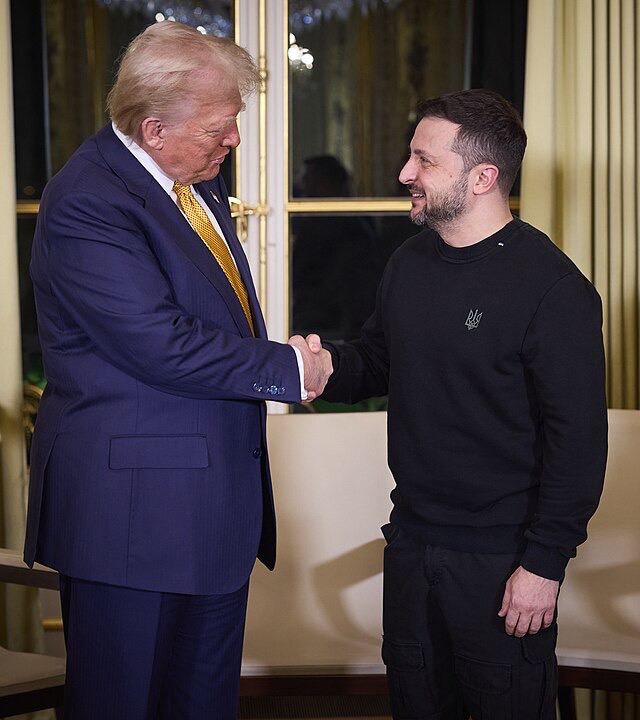In a dramatic twist to the ongoing conflict between Ukraine and Russia, former U.S. President Donald Trump has issued a direct warning to Ukrainian President Volodymyr Zelensky: accept the proposed peace deal now—or risk losing your entire country. As the battle rages on and diplomacy grows more tense, Trump’s ultimatum underscores a potential shift in U.S. foreign policy that has stunned political observers and international leaders alike.
This move, coming ahead of Trump’s potential re-election campaign, signals his desire to resolve the war quickly—possibly at the cost of Ukrainian territorial integrity and sovereignty. But is this ultimatum a realistic path to peace, or a geopolitical gamble that could backfire?
📌 Read more at Washington Post
Trump’s Peace Ultimatum: What Was Said
Trump’s latest statement regarding Ukraine came via social media, where he often shares unfiltered thoughts. Referring to President Zelensky, Trump wrote:
He can have Peace or, he can fight for another three years before losing the whole Country... This is a good deal. GET IT DONE.”
This ultimatum followed discussions about a U.S.-led peace initiative that would bring an end to the conflict between Russia and Ukraine. Trump warned that the longer Zelensky resists negotiations, the more likely it is that Ukraine could fall entirely to Russian control.
📌 More coverage via Sky News
Details of Trump’s Proposed Ukraine Peace Deal
While the exact terms haven’t been formally published, sources familiar with the Trump camp and diplomatic insiders have outlined key points that form the basis of the deal:
- Recognition of Crimea: The U.S. would formally acknowledge Russia’s sovereignty over Crimea, which was annexed in 2014.
- Frozen Conflict Lines: Current frontlines would become the new status quo, granting legitimacy to Russian control in occupied Ukrainian territories.
- NATO Membership Ban: Ukraine would be permanently barred from joining NATO—a major concession to Russian demands.
- Partial Russian Troop Withdrawal: Limited troop movements would be agreed upon, mostly in the east.
- Western Sanctions Relief: Russia would see a gradual rollback of Western sanctions if it abides by the agreement.
- Security Guarantees for Ukraine: The U.S. and select NATO members would offer security assurances—though the details remain vague.
To many observers, these proposals heavily favor Russian interests, effectively legitimizing territorial conquest.
📌 Detailed analysis at The Times
Why Zelensky Is Resisting the Terms
Ukrainian President Volodymyr Zelensky has not minced words in his opposition to any peace deal that undermines Ukrainian sovereignty. His administration has repeatedly stated that they will not trade land for peace and that Crimea and other occupied regions must be returned as part of any agreement.
Zelensky views Trump’s proposal as not only a betrayal of Ukraine but a dangerous precedent for international law. Accepting such a deal would signal to the world that military force can reshape national borders—an idea that runs counter to the UN Charter and post-WWII norms.
Zelensky’s recent remarks emphasize that any resolution must:
- Respect Ukraine’s territorial integrity
- Not reward Russian aggression
- Include full troop withdrawal and legal accountability for war crimes
📌 Zelensky’s latest speech available on President.gov.ua
Global Reactions to Trump’s Hardline Stance
The international community has responded with alarm. European leaders, particularly in Germany, France, and Poland, have expressed concerns over the optics and implications of the U.S. pressuring Ukraine into a deal that undermines its sovereignty.
Meanwhile, NATO Secretary General Jens Stoltenberg reaffirmed the alliance’s support for Ukraine, stating:
“Peace cannot be imposed—it must be just and sustainable. Ukraine alone will decide its future.”
Even within the U.S., Trump’s comments have sparked controversy. Senate Republicans remain divided, while many Democrats blasted the proposal as appeasement to Vladimir Putin.
📌 Follow real-time reactions via Politico Europe.



